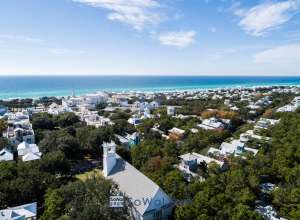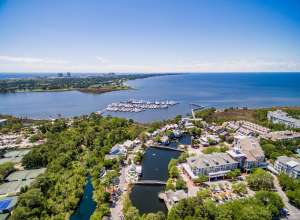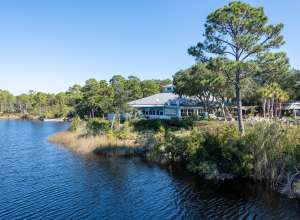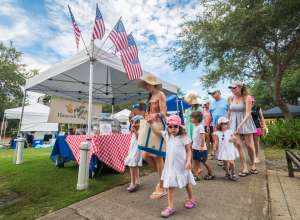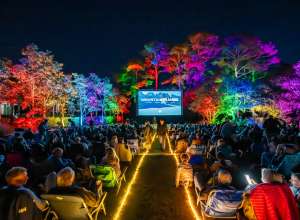Story
Leave No Trace Loved by Locals and Turtles
August 19, 2012 by SoWal Staff

In the past, some folks loved to set up a camp on the beach for a week on South Walton beaches and leave all of their stuff so they wouldn't have to lug it back and forth every day. A couple of years ago the county put their foot (feets) down and said, "no more". Thus the "Leave No Trace" program was begun.
The bottom line is you can't leave anything on the beach overnight. The truth is, it was getting out of hand and the beaches were getting cluttered. Worse though is that many folks left stuff on the beach when they left town. Sometimes stretches of beach looked like garbage dumps.
Nesting turtles and just-hatched babies often run into the stuff and get tangled up or disoriented. Momma turtles often turn back to the gulf without nesting when encountering obstacles, and babies can die if they don't get to the safety of the water in good time.
Here's a recent story by our partners at the South Walton TDC which explains a bit more:
It has also been a record year for sea turtle nests, with 115 nests recorded along South Walton beaches as of August 10. With record numbers of tourists sharing the beach with record numbers of turtles, the focus must be one of coexistence.
“We’ve got two and a half times the number of nests on our beaches this year over last,” said Sharon Maxwell, director of South Walton Turtle Watch. “With so many more turtles and so many more people, it’s more important than ever for beachgoers to ‘leave no trace.’ This means not only removing all items from the beach each night, but also filling in holes in the sand and turning off beachfront lighting. Turtle hatchlings will instinctively follow the first point of light they see to direct them to the water. If that light is not the moon, but artificial lighting from a condo balcony, they will not make it to the Gulf. If their paths are blocked by beach toys or impeded by holes, they will not make it to the Gulf. When you’re only about two inches long and operating strictly on instinct, virtually everything is an obstacle.”
Several years ago, in an attempt to preserve the destination’s popularity with nature-minded travelers, South Walton adopted Leave No Trace, a set of principles designed to assist outdoor enthusiasts with ways to reduce their impacts on natural environments.
“Visitors often tell us they repeatedly return to our beaches for their natural beauty and pristine condition, and we continually strive to preserve our status as an eco-friendly destination,” said Dawn Moliterno, executive director of the South Walton TDC. “In addition to enforcing the Leave No Trace program, the South Walton TDC provides $80,000 annually to fund South Walton Turtle Watch in their mission to preserve and protect endangered sea turtles. We are extremely encouraged by our joint effort’s notable success.”
That partnership seems to be working. Currently, all sea turtles native to U.S. waters are listed under the Endangered Species Act (ESA) and are under the joint jurisdiction of NOAA Fisheries and the U.S. Fish and Wildlife Service, who mandate the parameters under which South Walton Turtle Watch and other similar agencies must operate.
According to Maxwell, South Walton is one of only three counties throughout Florida and the only one on the gulf coast to have four of the five nesting sea turtles – loggerhead, green, Kemp’s ridley and leatherback - establish nests on its beaches.
The vast majority of nests belong to the loggerhead, but the first nest of the season was that of the rare Kemps ridley, and another of those has since been counted. There are also one green and one leatherback nest. Because leatherbacks are considered critically endangered, its nest was widely celebrated. South Walton Turtle Watch maintains a nest count separate from the local state parks.
“Our count is currently at 95, with Topsail Hill State Preserve reporting 12 nests, Grayton Beach State Park reporting six, and Deer Lake State Park reporting two. Before this year, the previous record was 58 nests in a single season. On July 10 another record was broken, marking the first time ever seven nests were discovered in a single day. By all accounts, the number and variety of nests has been phenomenal this season, due in part to the enforcement assistance provided by the South Walton TDC,” noted Maxwell.
The TDC employs a full-time code enforcement officer to monitor adherence to the Leave No Trace program. The beaches are patrolled at various times of the day to ensure compliance, with education being the primary goal.
“Once people understand the reasons behind the program, they overwhelmingly support us in our efforts to keep our beaches free of obstacles,” said code enforcement officer Jeff McVay. “Items left on the beach and holes in the sand can present a danger in several ways. Not only are they hazardous to nesting turtles and their hatchlings, but they’re a danger to people, too. They present tripping hazards to those walking the beach in dim light, and prevent responding vehicles from having clear access in emergencies.”
Walton County’s policy is to place a warning tag on items left on the beach after sunset. If those items remain there during follow-up patrol 24 hours later, they are removed and disposed of.
“We know that not everyone is familiar with the Leave No Trace program, so the warning tag was developed to offer beachgoers a grace period. We’d prefer not to have to remove anyone’s items, and feel that 24 hours is ample time to comply,” said McVay, adding that the tags are printed with a telephone number to call with questions regarding the program.
In addition to its code enforcement officer, the South Walton TDC recently employed a beach ambassador to help educate beachgoers about Leave No Trace and other rules of the beach.
“As with beach safety, education is key,” says Jon Ervin, TDC director of marketing and communications. “Because we welcome new visitors every week, the message must be repeated often that we are all responsible for the care and maintenance of these beaches that so many love so dearly. This is the perfect example of it taking a village to maintain the priceless natural resource that is valued so highly by our locals and visitors. Ultimately, each of us is responsible for their preservation.”
Turtle nesting season runs from May 1 through October 31 annually. Beachgoers who come across turtle hatchlings should contact the Walton County Sheriff’s Office at (850) 892-8186. For more information about Leave No Trace and other frequently asked questions, go to www.VisitSouthWalton.com/visitor-faq. For more information about South Walton Turtle Watch, go to www.southwaltonturtlewatch.org.




